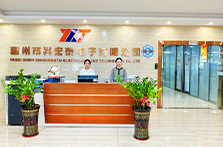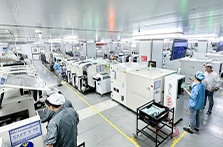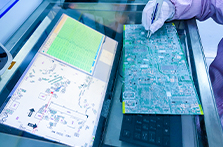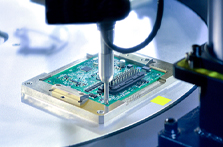Smt process improvement: lead-free process
- What is SMT lead-free process?
- Advantages of lead-free technology in smt
- The future trend of lead-free technology
- Why work with XHT?
What is SMT lead-free process?
The SMT lead-free process refers to the use of lead-free soldering materials for mounting and soldering of electronic components in Surface Mount Technology (SMT) to replace traditional lead-containing solder, thereby achieving smooth operation in the manufacturing process of electronic products. Lead-free. This shift is mainly in response to global environmental regulations, especially the EU’s RoHS Directive (Restriction of Hazardous Substances), which has banned the use of certain hazardous substances in electronic and electrical equipment since 2006, including lead. The lead-free process is implemented to reduce the impact of electronic waste on the environment and reduce the risk of human exposure to toxic heavy metals.
Some lead-free solder options
Tin zinc system (Sn-Zn)
The melting point of Sn-Zn solder is as low as 199°C, which is similar to the eutectic melting point of tin-lead solder. It is suitable for soldering components with poor heat resistance and is low cost. However, it quickly forms a thick zinc oxide layer in the atmosphere, and a nitrogen environment or a strong active film-removing flux is required to ensure welding quality. In addition, the poor wettability of Sn-Zn causes a large amount of scum to be produced in wave soldering, and the high reactivity of zinc brings stability and wettability problems when preparing solder paste. Therefore, it is difficult for Sn-Zn solder to be widely promoted in the short term.
Tin-copper system (Sn99.3Cu0.7)
Sn-Cu (Sn99.3Cu0.7) solder is the same as traditional tin-lead solder in terms of brightness, molding and wetting performance. Because of its simple composition, sufficient supply and economical cost, it is widely used in wave soldering and immersion soldering of PCBs. , especially suitable for rosin core soldering. Compared with tin-lead solder, Sn-Cu solder exhibits stronger strength and fatigue resistance, and has no bridging problems in fine-pitch QFP IC reflow soldering. In addition, it avoids the common defects of needle crystals and pores of lead-free solder and can form solder joints with good gloss.
Tin-silver series (Sn-Ag)
Sn-Ag solder has been widely used in the electronics industry for many years as a replacement for tin-lead solder. Although its application was limited by high-temperature welding in the early days, as lead-free requirements increased, Sn-Ag alloys were revived after improvements. This solder can maintain good adhesion for a long time, no nitrogen protection is required for reflow soldering, and its wettability and diffusivity are equivalent to those of tin-lead solder. The flux residue has a better appearance and is colorless and transparent. In terms of electrical conductivity, thermal conductivity and surface tension, Sn-Ag alloy has equivalent performance to tin-lead alloy.
Tin antimony series (Sn-Sb)
Sn-Sb solder is a high-temperature type with a melting point between 235 and 243°C. It mainly uses the (Sn95-Sb5) formula. Although its tensile strength is not as good as (Sn63-Pb37), due to its excellent plastic strain, the overall fatigue life is approximately 1.4 times higher than (Sn63-Pb37). Although the wettability of (Sn95-Sb5) is slightly worse than that of (Sn63-Pb37), industry test results show that its wetting performance is still acceptable.
Tin-bismuth series (Sn-Bi)
Sn-Bi alloys (Sn42-Bi58) are commonly used materials for low-temperature welding. The addition of bismuth significantly lowers the melting point (the focus of lead-free research), reduces surface tension (enhances wettability), and improves the durability of solder joints. However, the bismuth content has a significant impact on the mechanical properties of the alloy and easily introduces the risk of “lead” contamination. In addition, natural reserves are limited and the cost is high. Adding Ag helps to improve the stability of the alloy, so ternary or quaternary alloys containing bismuth are more popular.
Tin silver copper system (Sn-Ag-Cu)
Sn-Ag-Cu solder is regarded as an ideal substitute for tin-lead solder and has excellent physical properties. Among them, (Sn96.5-Ag3-Cu0.5) has a melting point lowered to 216~217°C compared with (Sn96.5-Ag3.5), which is about 4°C lower than the latter’s eutectic temperature. The specific Sn-Ag-Cu alloy is superior to (Sn96.5-Ag3.5) in terms of strength and fatigue life. Compared with (Sn99.3-Cu0.7), Sn-Ag-Cu has better strength and fatigue resistance, but its plasticity is slightly lower than (Sn99.3-Cu0.7).

Advantages of lead-free technology in smt
Environmental protection
The lead-free process significantly reduces the environmental footprint of electronic products, reduces the impact of lead pollution on human health and the ecological environment, and is in line with the global development trend of green manufacturing.
Performance improvements
Although the melting point of lead-free solder is slightly higher than that of lead-containing solder, new lead-free alloys (such as tin-silver-copper, tin-bismuth-silver, etc.) not only maintain good soldering performance but also exhibit higher fatigue resistance by optimizing the composition ratio. Strength, better thermal shock resistance and better creep resistance will help improve the reliability and service life of electronic products.
Market Competitiveness
Products that comply with international environmental protection regulations are more likely to gain favor from consumers and gain market access, which helps companies enhance their brand image and expand the international market.
The future trend of lead-free technology
New material research and development
Explore new lead-free solder alloys, such as lead-free solders with high reliability, low cost, and easy recycling, to meet the needs of different application scenarios.The green manufacturing integrated lead-free process will be deeply integrated with other green manufacturing technologies (such as energy-saving design, resource recycling, harmless treatment, etc.) to promote the greening of the entire life cycle of the electronics manufacturing industry.
Intelligent monitoring
With the help of the Internet of Things, big data, artificial intelligence and other technologies, real-time monitoring, intelligent early warning and optimized control of the lead-free process can be achieved to improve the efficiency and quality of lead-free production.

Why work with XHT?
The company will regularly audit raw materials, strengthen source control, and prevent lead-containing materials from entering the production process. At the same time, XHT products have passed relevant lead-free certifications, such as RoHS, REACH, etc., ensuring that the products meet domestic and foreign market access requirements. At the same time, XHT invests R&D resources and cooperates with scientific research institutions and universities to jointly explore new lead-free solder alloys, aiming to reduce the cost of lead-free solder and improve soldering performance, especially for key aspects such as heat resistance and fatigue resistance in specific application environments. index. XHT will also regularly publish environmental performance reports and social responsibility reports, publicly disclose the company’s progress and results in the lead-free process, and improvements in environmental impact, accept social supervision, and improve corporate transparency. Through case sharing, industry exchanges, etc., we actively promote the popularization of lead-free processes in the industry and the promotion of best practices. Contribute to building a green, efficient and sustainable electronics manufacturing industry chain.





